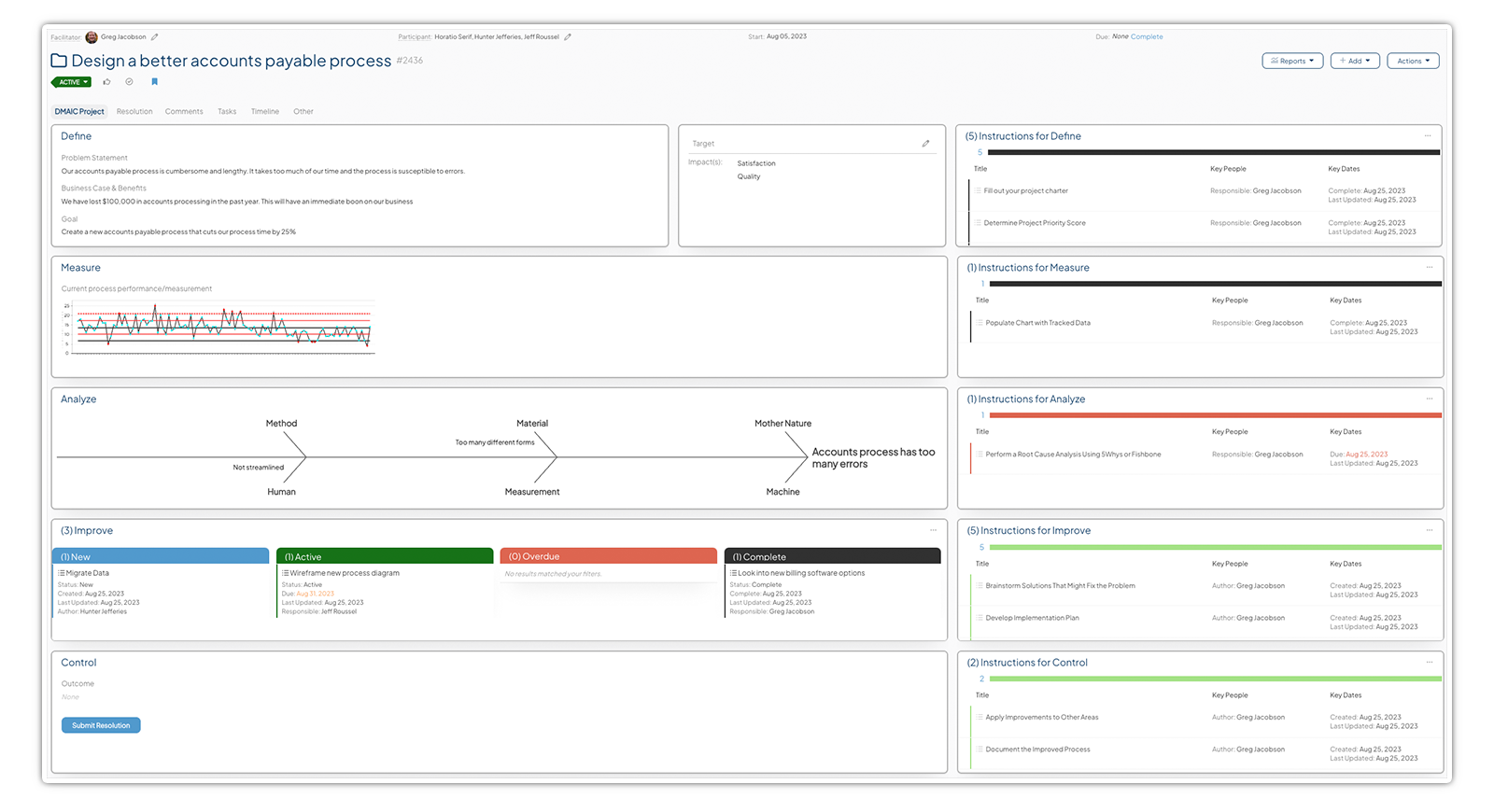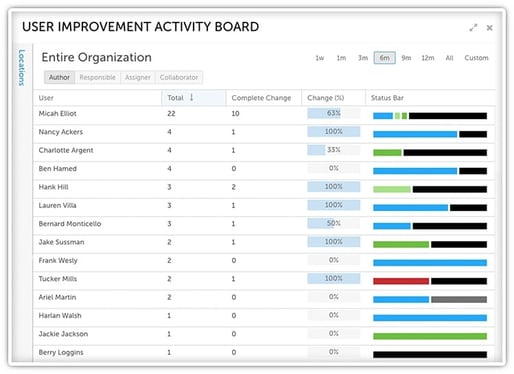In the mid 1980s, Motorola developed a set of techniques and tools called Six Sigma. In the ‘90s, it was adopted and promoted by General Electric as a key business strategy. Today, it remains a common approach to continuous improvement in all business sectors.
DMAIC (pronounced "de-may-ick") is often used as a Six Sigma framework tool that outlines a method of identifying and challenging sources of waste, poor quality, and inefficient processes, looking for opportunities for improvement.
While most companies are self-aware enough to recognize that they have problematic or inefficient steps within processes, they often don’t have a clear method for addressing them.
DMAIC works to improve problem solving by bringing some structure to the task. Because this approach is data-driven, it’s easier to identify the appropriate targets and root causes, and to make sure that any implemented changes actually outperform the previous method.

In the first stage of the DMAIC improvement cycle, the business problem is detailed, the scope and boundaries described, and potential resources and timelines outlined. This step is important because it is where success is defined - how will you know when the project has been successfully completed? What will that look like? You should also be able to answer questions like:
What impact does this problem have on your organization and your people?
Who is the customer (the end customer and/or internal customers)?


How will you know if your actions have actually resulted in an improvement? The second step of DMAIC allows for such future comparison by assessing the current state for use as a quantified baseline. To do this, it is necessary to identify objective performance metrics than can be compared over time. This step is vital since it permits an unbiased assessment of a project’s actual impact.
The team should determine:
What performance indicators they seeking to improve
How they will accurately measure the current state and the change over time
Who will be responsible for measurement and reporting and how often the data be collected
When trying to solve a problem, it is essential that the improvement team understands its true root cause(s). How else will they know which aspect of the process to target in their improvement work?
Your team will want to ask:
What are the likely causes of the problem?
What priority should each cause be given?


Only after completing the first three steps, is it time to identify, implement, and test a solution. At times, the solution will quickly become clear, but sometimes brainstorming and creativity may be needed from a diverse team.
At this point, you’ll want to determine:
What the plan for improvement is, and how it will be implemented
What are the risks of the plan are, and how they can be minimized
The final step is to determine if the improvements can be maintained over time, and if the improvement can be applied to other processes throughout the organization.
The key to this step is to know:
How you will document the improvement
How the process will be monitored over time
How what you have learned can be shared and applied in other areas

DO Collect a Variety of Data
When doing improvement work, people often get focused solely on the monetary or time-based rewards. However, DMAIC and other improvement disciplines can lead to even more benefits, including increased safety and quality, and greater employee and customer satisfaction. As such, it’s important that you develop a scale to measure these aspects of the process before implementing any changes so that you can verify that your work is actually causing verifiable improvements.
DO Work with a Cross-Functional Improvement Team
When looking for opportunities for improvement, it can be very helpful to consult people from a variety of backgrounds - while the frontline employees are best able to identify problems in their work processes, an outside perspective can often lend itself to finding an out of the box solution. Read more about the value of cross functional collaboration here.
DON’T Blame the People
The focus of DMAIC should be on identifying problems in the processes, rather than blaming or finding fault with the employees performing those processes. By keeping this in mind, you can create a culture in which employees are comfortable in identifying mistakes and opportunities for improvement, which in turn creates a culture in which improvement is constantly made and errors prevented. Leaders are there to support their employees so they can have better processes with which to work. Blame processes, not people.
DON’T Rely on the Manual
DMAIC doesn’t work if all your insights are based on what has been documented as the policy or standard, rather than on what is actually happening in the workplace. The result of the Define and Measure steps may well be changes to documented procedures, or the realization that some training deficit is contributing to deviations from the standard work.
When going about your daily business, you may notice several opportunities for improvement. If you wait until the end of the day to write up your insight, or decide to wait until the next improvement meeting, that insight may wind up lost or forgotten. Accessing continuous improvement software on a mobile device allows you to enter those ideas as they occur to you, preventing this loss of information.


With detailed reports showing individuals’ engagement in various continuous improvement work, continuous improvement software makes it easy to see who is utilizing DMAIC and thus promoting a culture of continuous improvement and employee engagement.
Continuous improvement software captures the impact of every improvement that’s made as a result of DMAIC (as well as all other continuous improvement initiatives), helping you to monitor and report on the impact of the work and the ROI of continuous improvement.


Continuous improvement software helps improve communication between frontline employees and their leaders, adding a sense of accountability to the improvement process. This helps to ensure that changes are actually made, and that employees receive a fast response. People will stop speaking up if they think action and support won’t follow.
Copyright © 2025
Privacy Policy